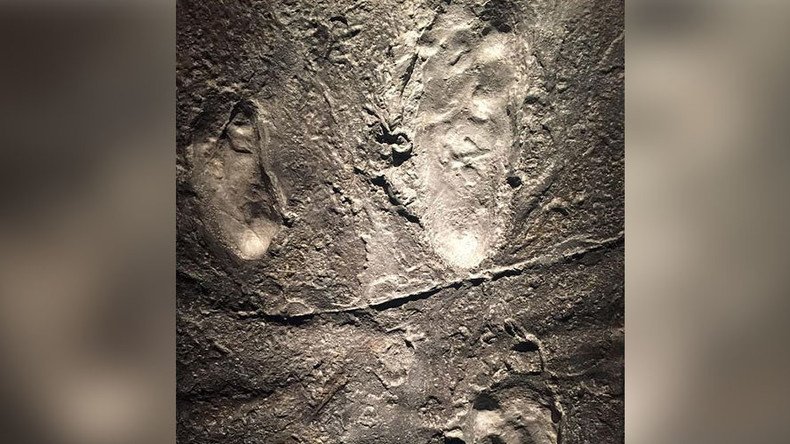King of the swingers? Prehistoric man had multiple partners, new study finds

Our ancient ancestors may have had more than one partner, according to new research. Footprints from 3.7 million years ago show an exceptionally tall male accompanied by at least two female companions.
Belonging to the hairy bipedal ape Australopithecus afarensis, the footprints of five primates were
discovered at a famous site site in Laetoli, Tanzania, which was where, in 1978, prints from one
male and one female were also found.
This new discovery is thought to include the prints of up to five primates, preserved after they
walked over volcanic ash together which was then dampened by rain, with the male thought to be
a partner to up to three of his companions.
The Australopithecus who left the new footprints unearthed at #Laetoli is possibly the tallest on record https://t.co/6R5C4bLvb9pic.twitter.com/IvxueGvD8P
— eLife - the journal (@eLife) December 14, 2016
“A tentative conclusion is that the group consisted of one male, two or three females, and one or
two juveniles, which leads us to believe that the male – and therefore other males in the species –
had more than one female mate,” palaeontologist Marco Cherin told The Guardian.
Cherin and his team from the University of Perugia published their findings in the journal eLife.
READ MORE: ‘1st of its kind’: 99 million-year-old feathered dinosaur tail discovered in Myanmar
Adding to the evidence that our ancestors were polygamists is the size of the male in the group.
Estimated to have stood at 165 cm, he is the largest Australopithecus afarensis on record. This
makes him over half a meter taller than the famous Lucy specimen found in Ethiopia, aged 3.2
million years old.
Oldest early human footprints suggest groups of females shared a common 'husband' https://t.co/jiGb0NNbIypic.twitter.com/llJi8G9Kpd
— New Scientist (@newscientist) December 14, 2016
“They were probably similar in certain respects to those of our cousins, the gorillas, with a single
dominant big male accompanied by his females and their offspring,” Giorgio Manzi from the Sapienza University of Rome, who was also involved in the excavations, told New Scientist.
Unlike gorillas, some researchers believe the female in a family left to find a new social group,
according to a 2011 study. With gorillas, it is always the larger male who leaves his family behind to establish a new social group.
When exactly our ancestors (or at least some of them) started to lean towards one ancestor is
unknown. More excavation of the site is scheduled for mid-2017 when further details of how our
human ancestors lived may be revealed.












